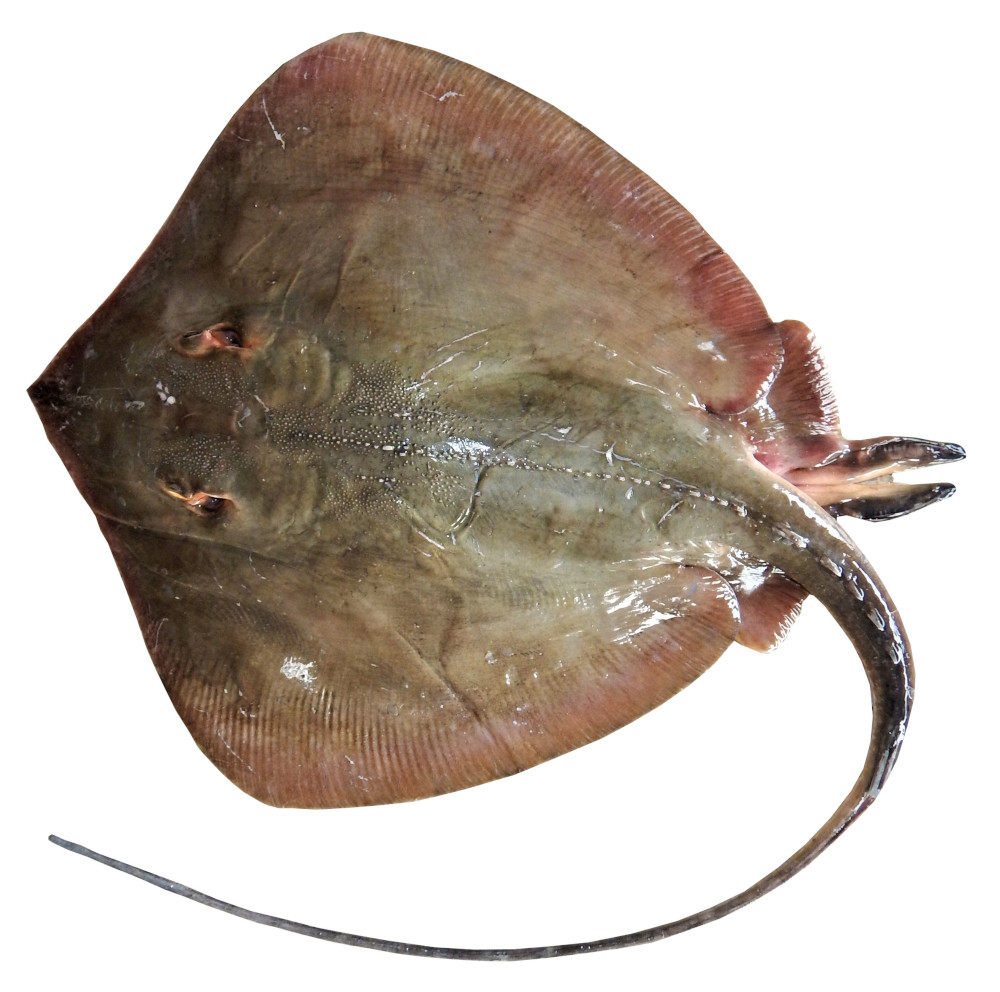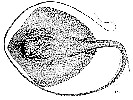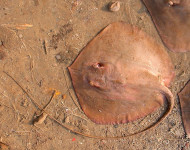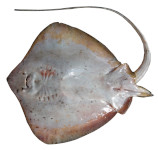Hemitrygon bennettii
(Müller & Henle, 1841)
Bennett's stingray
Classification: Elasmobranchii Myliobatiformes Dasyatidae
Reference of the original description
Systematische Beschreibung der Plagiostomen. Berlin, Veit, pp. 1–200
Systematische Beschreibung der Plagiostomen. Berlin, Veit, pp. 1–200
Image of the original description
.jpg)
Hemitrygon Bennettii (Müller & Henle, 1841)
.jpg)
Hemitrygon Bennettii (Müller & Henle, 1841)
Synonyms / new combinations and misspellings
Dasyatis benetti, Dasyatis benneti, Dasyatis bennetti, Dasyatis bennettii, Dasyatis (Pastinachus) bennettii, Dasybatus bennetti, Hemitrygon bennetti, Trygon bennetti, Trygon bennettii, Trygon (Hemitrygon) bennetti
Dasyatis benetti, Dasyatis benneti, Dasyatis bennetti, Dasyatis bennettii, Dasyatis (Pastinachus) bennettii, Dasybatus bennetti, Hemitrygon bennetti, Trygon bennetti, Trygon bennettii, Trygon (Hemitrygon) bennetti
Types
Hemitrygon bennettii
Dasyatis bennetti
Syntype: BMNH: uncat. (not found) Trinidad BMNH: 1953.8.10.13 China MNHN: not found
Hemitrygon bennettii
Dasyatis bennetti
Syntype: BMNH: uncat. (not found) Trinidad BMNH: 1953.8.10.13 China MNHN: not found
Description :
Citation: Hemitrygon bennettii (Müller & Henle, 1841): In: Database of modern sharks, rays and chimaeras, www.shark-references.com, World Wide Web electronic publication, Version 12/2025
Please send your images of "Hemitrygon bennettii" to info@shark-references.com

Hemitrygon Bennettii male, DL: 47.2 cm, DW: 44.4 cm, Weight (kg): 5.25 © G. M. MASUM BILLAH, Program Coordinator- Marine Mega-Fauna & Fisheries, Wildlife Conservation Society- Bangladesh Program (masumwcsbd@gmail.com)

Hemitrygon Bennettii male, DL: 47.2 cm, DW: 44.4 cm, Weight (kg): 5.25 © G. M. MASUM BILLAH, Program Coordinator- Marine Mega-Fauna & Fisheries, Wildlife Conservation Society- Bangladesh Program (masumwcsbd@gmail.com)
Common names
 Bennett"s cowtail,
Bennett"s cowtail,  Bennett"s stingray,
Bennett"s stingray,  Frilltailed stingray
Frilltailed stingray
 Bennett"s cowtail,
Bennett"s cowtail,  Bennett"s stingray,
Bennett"s stingray,  Frilltailed stingray
Frilltailed stingray
Distribution
Indo-West Pacific: Distribution not well known, probably ranging from India to southern Japan and the Philippines, but most abundant in the northwestern Pacific. Reported from New Caledonia (Ref. 9070) and Vanuatu [20070]. Source: www.gbif.org
Indo-West Pacific: Distribution not well known, probably ranging from India to southern Japan and the Philippines, but most abundant in the northwestern Pacific. Reported from New Caledonia (Ref. 9070) and Vanuatu [20070]. Source: www.gbif.org
Human uses
fisheries: minor commercial; price category: low; price reliability: very questionable: based on ex-vessel price for species in this family
fisheries: minor commercial; price category: low; price reliability: very questionable: based on ex-vessel price for species in this family
Biology
Exhibit ovoviparity (aplacental viviparity), with embryos feeding initially on yolk, then receiving additional nourishment from the mother by indirect absorption of uterine fluid enriched with mucus, fat or protein through specialised structures [733]. Distinct pairing with embrace [17086]. Feeds on fish [20056]. Max size may reach up to 85 cm WD (Ref. 47613).
Exhibit ovoviparity (aplacental viviparity), with embryos feeding initially on yolk, then receiving additional nourishment from the mother by indirect absorption of uterine fluid enriched with mucus, fat or protein through specialised structures [733]. Distinct pairing with embrace [17086]. Feeds on fish [20056]. Max size may reach up to 85 cm WD (Ref. 47613).
Habitat
demersal; marine
demersal; marine
Remarks
shark-references Species-ID=7937;
shark-references Species-ID=7937;
Parasites (arranged by Jürgen Pollerspöck)
Cestoda
Cestoda
- Rhinoptericola butlerae (Beveridge & Campbell, 1988) [30611]



















